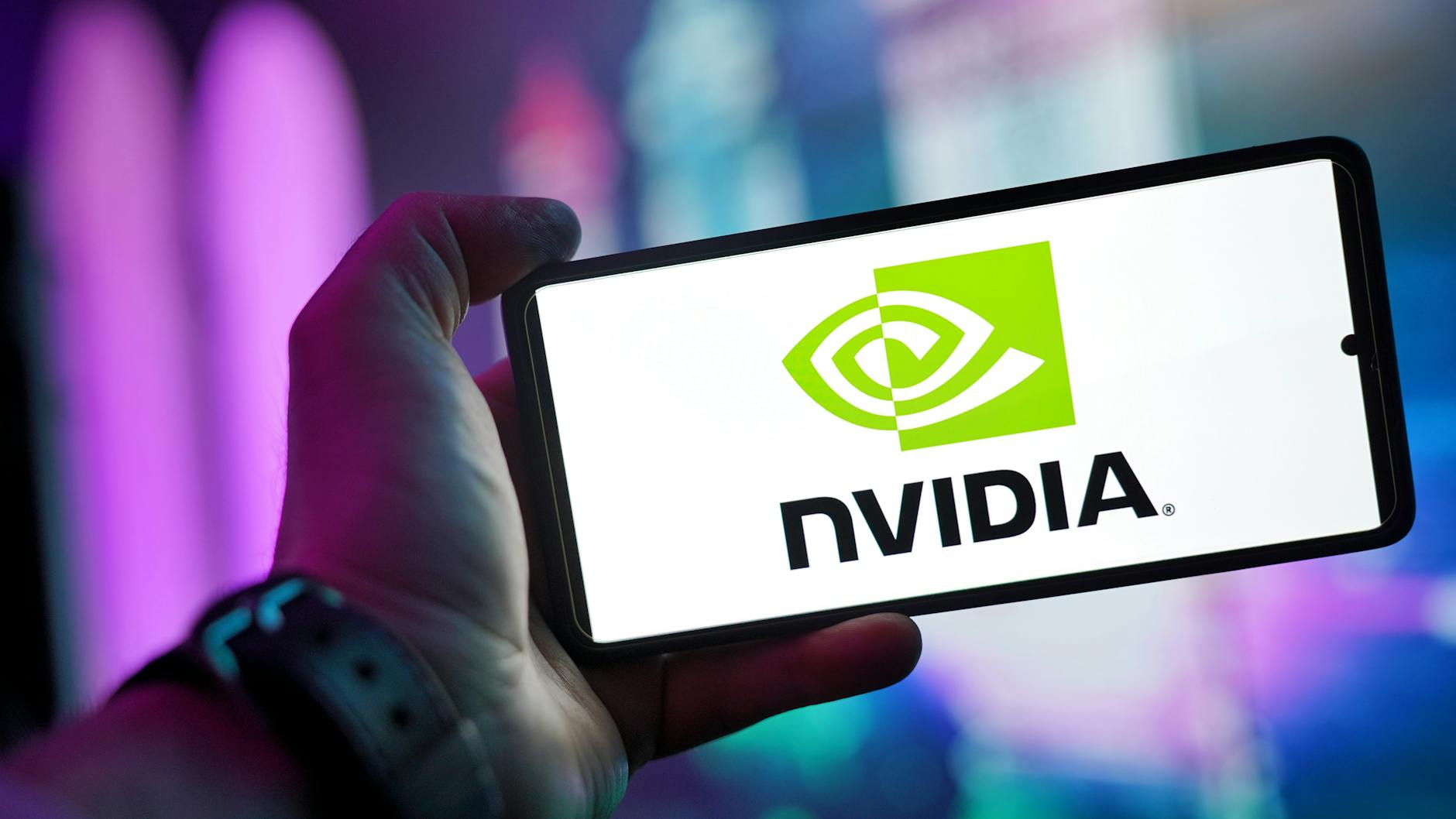Estimated reading time: 6 minutes
NVIDIA Q2 2026 Earnings: AI Stocks Rise, Risks Persist
August 27, 2025
Executive Summary
NVIDIA Corporation’s Q2 2026 earnings, reported on August 27, 2025, solidify its dominance in AI infrastructure. The company achieved ✔ $46.4 billion in revenue, a 53% YoY increase, surpassing guidance of $46.0–$46.5 billion. Non-GAAP EPS of ✔ $1.01 met consensus estimates. A ✔ $54 billion Q3 outlook (±2%) signals strong demand for AI infrastructure, driven by the Blackwell platform.
However, data center revenue of ✘ $41.2 billion slightly missed expectations (~$41.3 billion), impacted by an ✘ $8 billion shortfall in China due to U.S. export restrictions and a 15% sales fee. Geopolitical tensions, supply chain constraints, and rising competition require investor caution.
NVIDIA’s growth remains robust, but investors must navigate risks to capitalize on AI opportunities.
Summary of Beats, Misses, and Forward Guidance
| Metric | Actual | Guidance/Expectation | Outcome |
|---|---|---|---|
| Q2 Revenue | $46.4 billion | $46.0–$46.5 billion | ✔ Beat |
| Q2 Non-GAAP EPS | $1.01 | $1.01 | ✔ Met |
| Q2 Data Center Revenue | $41.2 billion | ~$41.3 billion | ✘ Miss |
| China Revenue Impact | -$8 billion | Not forecasted | ✘ Shortfall |
| Q3 Revenue Outlook | $54.0 billion | ~$53.1 billion | ✔ Optimistic |
1. NVIDIA Q2 2026 Financial Performance
NVIDIA delivered strong results, reinforcing its leadership in AI infrastructure:
- Total Revenue: ✔ $46.4 billion, up 6% QoQ and 53% YoY, exceeding guidance of $46.0–$46.5 billion.
- Non-GAAP EPS: ✔ $1.01, meeting consensus estimates.
- Non-GAAP Gross Margin: 75.7%, slightly below Q1’s 76.5% due to Blackwell platform production costs.
- Operating Margin: Stable at ~50%, reflecting efficient cost management despite higher Blackwell expenses.
- Segment Performance: Data center at $41.2 billion (88% of revenue), with gaming, professional visualization, and automotive segments showing steady growth, driven by AI-enhanced applications.
2. Growth Drivers for AI Infrastructure
NVIDIA’s growth is fueled by its leadership in AI infrastructure:
- Data Center: Revenue of ✘ $41.2 billion, up 53% YoY, driven by Blackwell platform demand from hyperscalers like AWS and Microsoft.
- Networking: Strong growth from Spectrum-X Ethernet and InfiniBand solutions, supporting AI workload connectivity.
- Product Pipeline: Blackwell and Blackwell Ultra platforms enhance AI compute capabilities, with full-scale production expected in Q4 2025.
NVIDIA’s focus on AI infrastructure positions it for sustained growth in a high-demand market.
3. Blackwell Platform Impact
The Blackwell platform is a cornerstone of NVIDIA’s Q2 2026 performance:
- Revenue Contribution: $20.4 billion from Blackwell GPUs, reflecting strong adoption by cloud providers.
- Performance: Offers 50x performance improvement over the Hopper architecture, enabling faster AI training and inference.
- Market Outlook: Demand from hyperscalers and enterprises supports a projected $7.3B–$34B total addressable market for Blackwell in 2025–2026.
Blackwell’s technical superiority strengthens NVIDIA’s AI market leadership.
4. NVIDIA Valuation and Market Reaction
NVIDIA’s stock faced volatility due to high expectations:
- Market Reaction: Shares dropped ✘ 2.3% in after-hours trading due to the China shortfall and margin concerns, but later stabilized.
- Valuation: Forward P/E of ~40x, supported by 50%+ YoY revenue growth, but tempered by geopolitical and margin risks.
- Market Cap: $4.34 trillion, making NVIDIA one of the world’s most valuable companies.
- Free Cash Flow: Strong cash flow generation supports reinvestment in AI and shareholder returns.
5. Geopolitical Challenges
NVIDIA faces significant headwinds from U.S.-China trade restrictions:
- China Market: ✘ $8 billion shortfall due to export restrictions and a 15% sales fee, with Chinese policies favoring domestic chips like Huawei’s Ascend.
- Trade Risks: ✘ U.S.-China tensions, including potential export license changes, could further impact revenue.
6. NVIDIA Q3 2026 Forward Guidance
NVIDIA’s Q3 outlook signals confidence in AI demand:
- Revenue: Forecasted at ✔ $54 billion (±2%), exceeding consensus of $53.1 billion.
- Non-GAAP Gross Margin: Expected at 74.1%–75.0%, driven by Blackwell production scale-up.
- Drivers: Blackwell Ultra and networking solutions, with increasing hyperscaler adoption.
NVIDIA’s strong guidance reflects optimism in AI infrastructure demand.
7. Competitive Landscape
NVIDIA faces growing competition:
- Hyperscalers: ✘ Custom chips from Google, Amazon, and Meta reduce reliance on NVIDIA GPUs.
- Emerging Players: ✘ AMD and Huawei challenge market share with alternative AI chips.
- Advantage: CUDA ecosystem provides a software moat, ensuring developer loyalty.
8. Risks and Challenges for Investors
Key risks include:
- Supply Chain: ✘ TSMC and HBM3E bottlenecks could delay Blackwell production.
- Geopolitical: ✘ U.S.-China trade restrictions caused an ✘ $8 billion shortfall, impacting 5–10% of revenue.
- Competition: ✘ Custom silicon and emerging chipmakers threaten market share.
- Macroeconomic: ✘ Inflation and interest rate pressures may reduce hyperscaler capex ($315–$365 billion in 2025).
- Regulatory: ✘ Antitrust scrutiny over NVIDIA’s AI market dominance could lead to restrictions.
Investors must monitor risks to balance NVIDIA’s growth potential.
9. Industry Impact and AI Stock Trends
NVIDIA’s performance shapes the AI ecosystem:
- Hyperscaler Capex: Drives $315–$365 billion in 2025 spending, boosting TSMC, SK Hynix, and Dell Technologies.
- AI Ecosystem: Supports cloud, robotics, and edge AI growth, with companies like SES AI benefiting from NVIDIA’s AI infrastructure.
- Mixed AI Stock Performance: While some AI stocks (e.g., TSMC) gained post-earnings, others, like quantum computing firms, faced volatility due to high expectations.
NVIDIA’s earnings influence AI stocks, but performance varies across the sector.
10. Guidance to Investors
NVIDIA’s Q2 2026 earnings offer opportunities for investors:
- Long-Term Growth: ✔ Hold for $54 billion Q3 outlook and 50%+ YoY growth. Forward P/E of ~40x is reasonable, but monitor valuation amid margin compression.
- Risk-Averse: ✔ Diversify with TSMC, SK Hynix, or Dell to mitigate ✘ China exposure (5–10% revenue).
- Opportunistic: ✔ Buy on dips during volatility (e.g., ✘ 2.3% drop post-earnings).
- Hedging: Use ✔ covered calls or ✔ protective puts to manage ✘ volatility risks.
- Geopolitical: Track ✘ U.S.-China trade risks, impacting ✘ 5–10% revenue.
- Valuation: ✘ Assess entry points amid macroeconomic and regulatory risks.
Leverage NVIDIA’s AI leadership with disciplined risk management.
11. Conclusion
NVIDIA’s Q2 2026 earnings, with ✔ $46.4 billion revenue and ✔ $54 billion Q3 outlook, affirm its leadership in AI infrastructure.
✘ $8 billion China shortfall, supply chain constraints, and competitive pressures pose challenges. Investors should balance growth with risk management.
NVIDIA remains a cornerstone of AI infrastructure, requiring strategic execution to navigate risks.
12. Disclaimer
This analysis is for informational purposes only and does not constitute financial, investment, or legal advice. Investors should conduct due diligence and consult a financial advisor. NVIDIA’s stock faces risks from U.S.-China trade restrictions, supply chain disruptions, competition, macroeconomic factors, and regulatory changes. Past performance is not indicative of future results. Qunatical assumes no liability for losses from actions based on this analysis.
NVIDIA’s ✔ strong financials and ✔ AI leadership are tempered by ✘ China challenges, supply chain risks, and competition, requiring careful navigation for investors.










